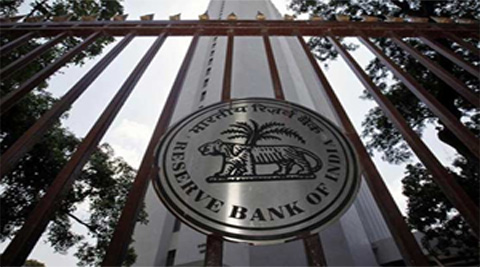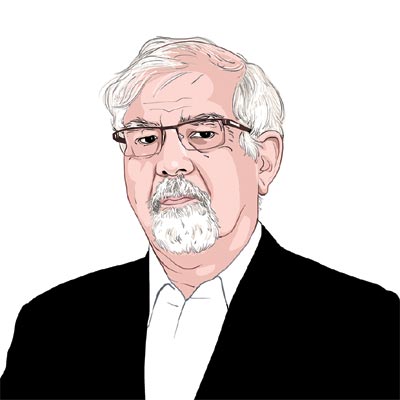Opinion Top ten reasons for inflation decline
A resurgence in inflation is a low probability event. Given low GDP growth, why is the RBI acting so coy about cutting repo rates?

 The RBI is ‘comfortable’ with reaching the inflation target of 8 per cent in December, but less sanguine about reaching the 6 per cent target by January 2016.
The RBI is ‘comfortable’ with reaching the inflation target of 8 per cent in December, but less sanguine about reaching the 6 per cent target by January 2016.
There are at least 10 reasons why it is likely that the RBI will be forced to cut repo rates well before the market expects. Most market participants do not believe that the RBI will cut rates at all until late 2015. In this article, I present evidence (yet again!) that the Indian economy can absorb (needs) rate cuts without any danger of generating inflation. Hence, either I will be gloriously wrong or several market experts (including the IMF) will be. The RBI, a major actor in this duel, has decided to plead the fifth (I have a right to remain silent in order to prevent self-incrimination). In the monetary policy statement released yesterday, the RBI concludes: “Future policy stance will be influenced by the Reserve Bank’s projections of inflation relative to the medium-term objective (6 per cent by January 2016), while being contingent on incoming data.” In other words, the RBI cannot make a mistake because it will cut rates when it will cut rates.
The top 10 reasons, in increasing order of importance, of why one should expect the RBI’s 6 per cent target for January 2016 to be reached:
 C R Sasikumar
C R Sasikumar
Ten, the MGNREGA. This rural employment programme is inflationary because its operation pushes wages up beyond productivity growth. I have never been a believer in this way out-of-the-box reasoning for the simple reason that even at the best of times, the MGNREGA never provided wages for more than 1 per cent of rural workdays. But believers please note: the Rs 33,000 crore of expenditures budgeted for 2014-15 is worth half (in real terms) of the Rs 40,000 crore level of expenditures in 2009-10.
Nine, rainfall. Around June, we were talking of a drought situation with its attendant effects on food inflation. Again, precious little evidence exists that droughts have any impact on inflation, or that food surplus causes disinflation. The two years 2012 and 2013 were in the top third of rainfall for India since 1871 — and they were among the two best years of agricultural production, and the two worst years for food inflation. So much for that idea, sirji.
Eight, expectations. Thankfully, the September monetary policy statement does not mention the phrase “inflation expectations” even once. If there is a departure from the RBI statements for the last six years, it is this. I guess the RBI must have concluded that its inflation expectations survey is worse than junk. This is significant progress.
Seven, world growth. Unlike six months ago, world GDP is on the brink of a recession (measured as 3 per cent growth). Certainly the US is doing very well but it may not do so for long. Growth in the rest of the world — including Europe, Japan, China and India — is not burning any decks with scorching pace. Indeed, most major economies are screeching to a relative halt, that is, decelerating. Add to it the multitude of worldwide political problems. Not a recipe for either growth or inflationary pressures.
Six, the end of quantitative easing in the US (and England). This is another of the great falsehoods propagated by the inflation bulls. Let me see if I get this right — the end of QE will dampen growth, slow down already low inflation and this will cause prices to rise in India?
Five, persistence. Instead of inflation expectations, we now have a new “explanation” in town — persistence of inflation. Whether persistence is present or not is an empirical matter, and something that can be derived from past data. What does one mean by persistence? Habit, that is, inflation stays high because I continue to expect it to be so. However, in India, empirical estimates of “persistence” in CPI inflation converge around five quarters. So, there is hardly any persistence in annual inflation data. Got to look under some other rock to find persistence of inflation in India.
Four, the Food and Agriculture Organisation’s world food prices: Meat prices are at their all-time peak but with Hindutva and vegetarianism rising, this “inflation” is no threat to India. But indices for dairy and edible oil (and sugar) are all down more than 40 per cent from their 2011 peak, around the same time when the RBI (and the IMF) began screaming “protein inflation”. And cereal prices are down 32 per cent in the same time period. I guess we should soon see the food ministry arguing for a minimum of 20 per cent reduction in the minimum support prices (MSP) for wheat and rice, especially since rising world food prices was the reason offered by the ministry to raise the MSPs sky high over the last six years.
Three, MSP inflation. The UPA government increased the MSP by only 6.7 per cent in 2013 and 4.2 per cent in March. As I have argued several times in these columns for the last three years, the key driver of inflation in India is food inflation (food accounts for 50 per cent of the CPI) and the key driver of food inflation is the MSP set by the government. Unless the Narendra Modi government decides to learn nothing from the past (little chance of that), it is unlikely to raise average MSP by more than a few percentage points in October. Which means that a CPI inflation figure of 5 per cent or less is baked for next year.
Two, developing country inflation. Maybe inflation can intrude from outside since India is now integrated with the world economy. But world growth is down, as is world inflation. The median developing country CPI inflation for the last three years has averaged 3.8 per cent, the fifth lowest such increase since 1975. Further, world crude oil prices (Brent) are now more than 15 per cent below their peak of $115 per barrel just three months ago.
One, inflation targeting. The RBI is “comfortable” with reaching the inflation target of 8 per cent in December, but less sanguine about reaching the 6 per cent target by January 2016. Because of so many known unknowns over the next year? Indeed, Governor Raghuram Rajan stated that there are still significant risks towards achieving the 6 per cent target. In December 2013, year-on-year CPI inflation in India was 10 per cent, and the RBI targets for 2014 and 2015 can be seen as a drop in inflation of 2 percentage points (ppt) per year. For all the reasons stated above, it is likely that December will see a handle much closer to 7 than 8 per cent. (Oxus’s forecast for y-o-y CPI inflation for September is 7.2 per cent or less). Thus, if the 8 per cent December RBI forecast can be bettered by 1 ppt, then why not the same for the 6 per cent December 2015 forecast, a year for which the conditions for inflation decline will be even more propitious? (For starters, the persistent habit of expecting high inflation will be less.)
Of course, the monetarists and those destined to be wrong can merrily point out that all of the above conditions could reverse and we could be back with high inflation; hence, one can never be too careful. Unfortunately, Black Swan events cannot be predicted with any accuracy. Build no roads and there will be no accidents has been the overriding motto of the Indian bureaucrat. And yes, while we are being risk averse, we should also remember that pigs may fly in 2015 and thereby cause inflation to spike.
The writer is chairman of Oxus Investments, an emerging market advisory firm, and a senior advisor to Zyfin, a leading financial information company




